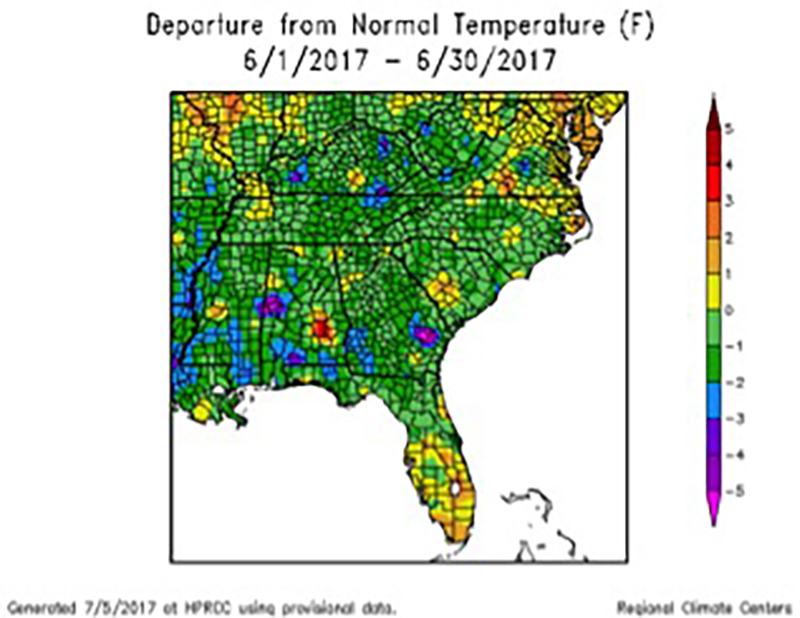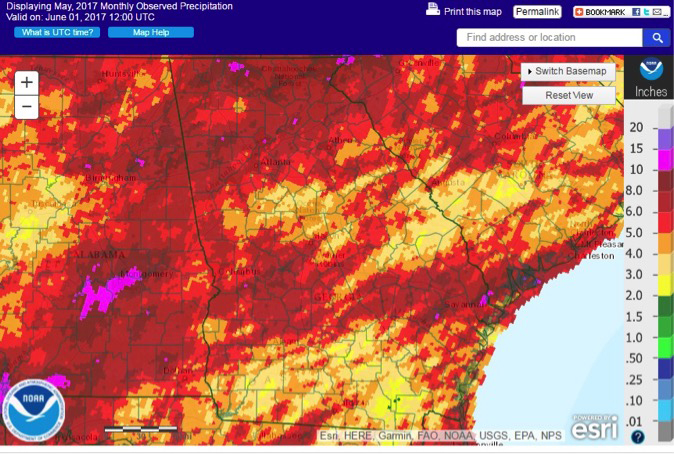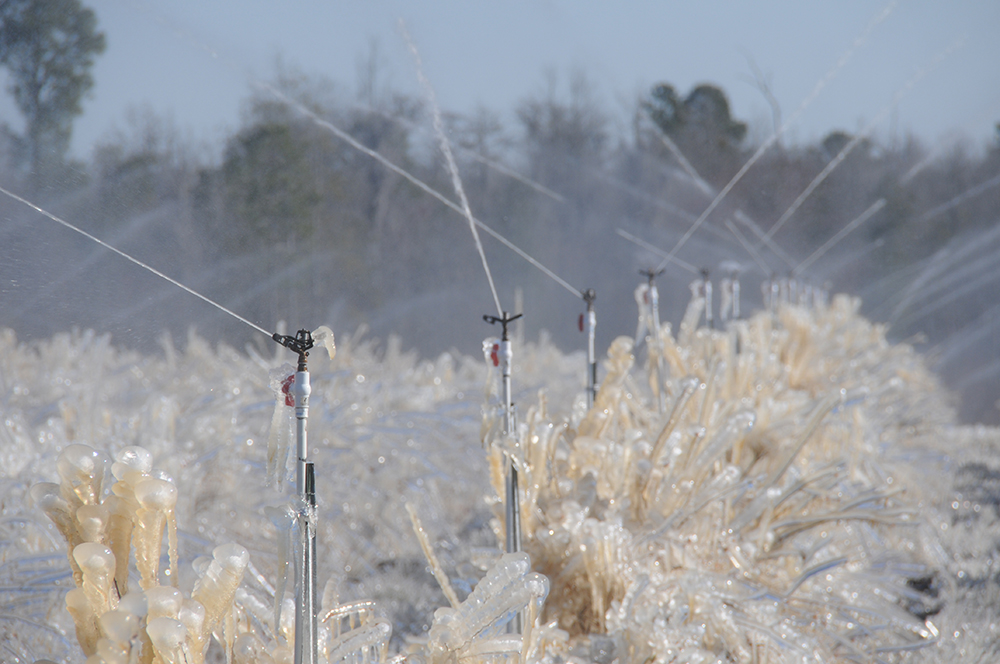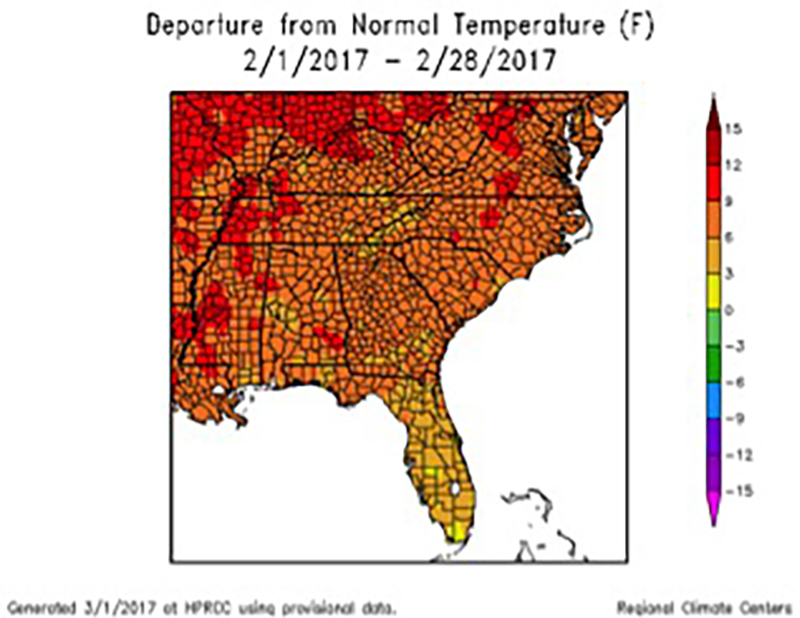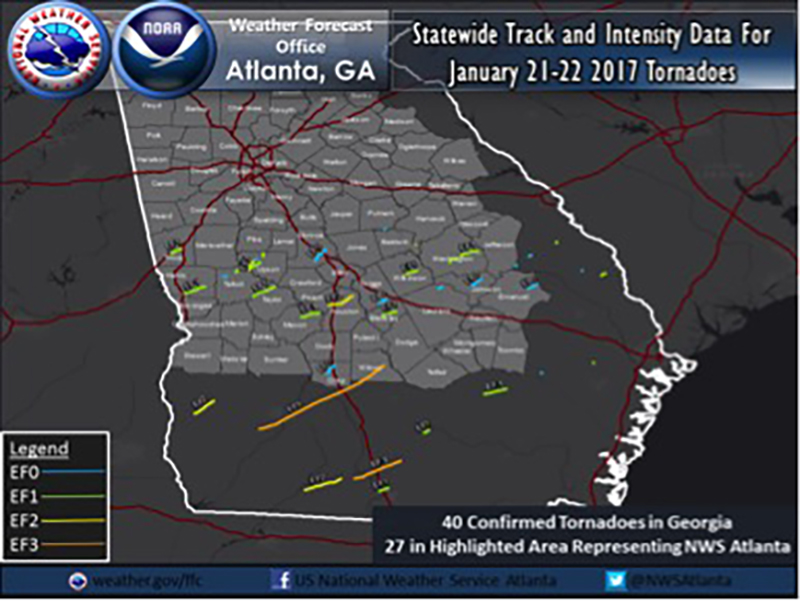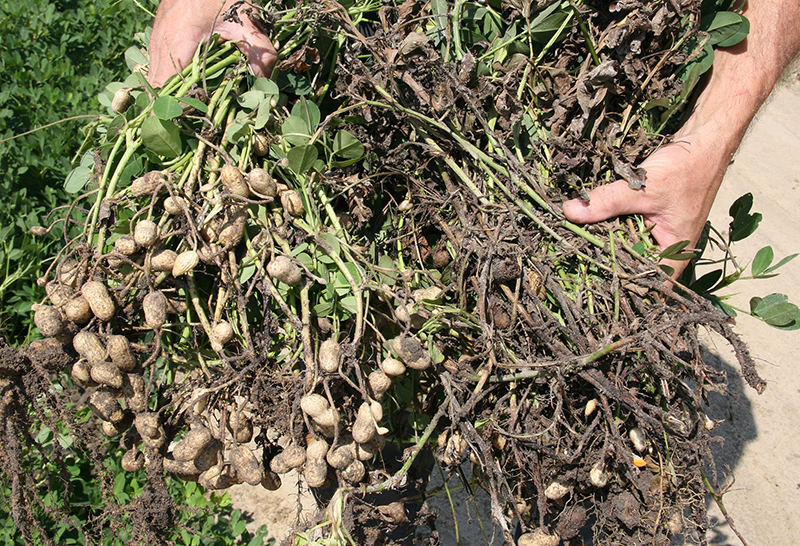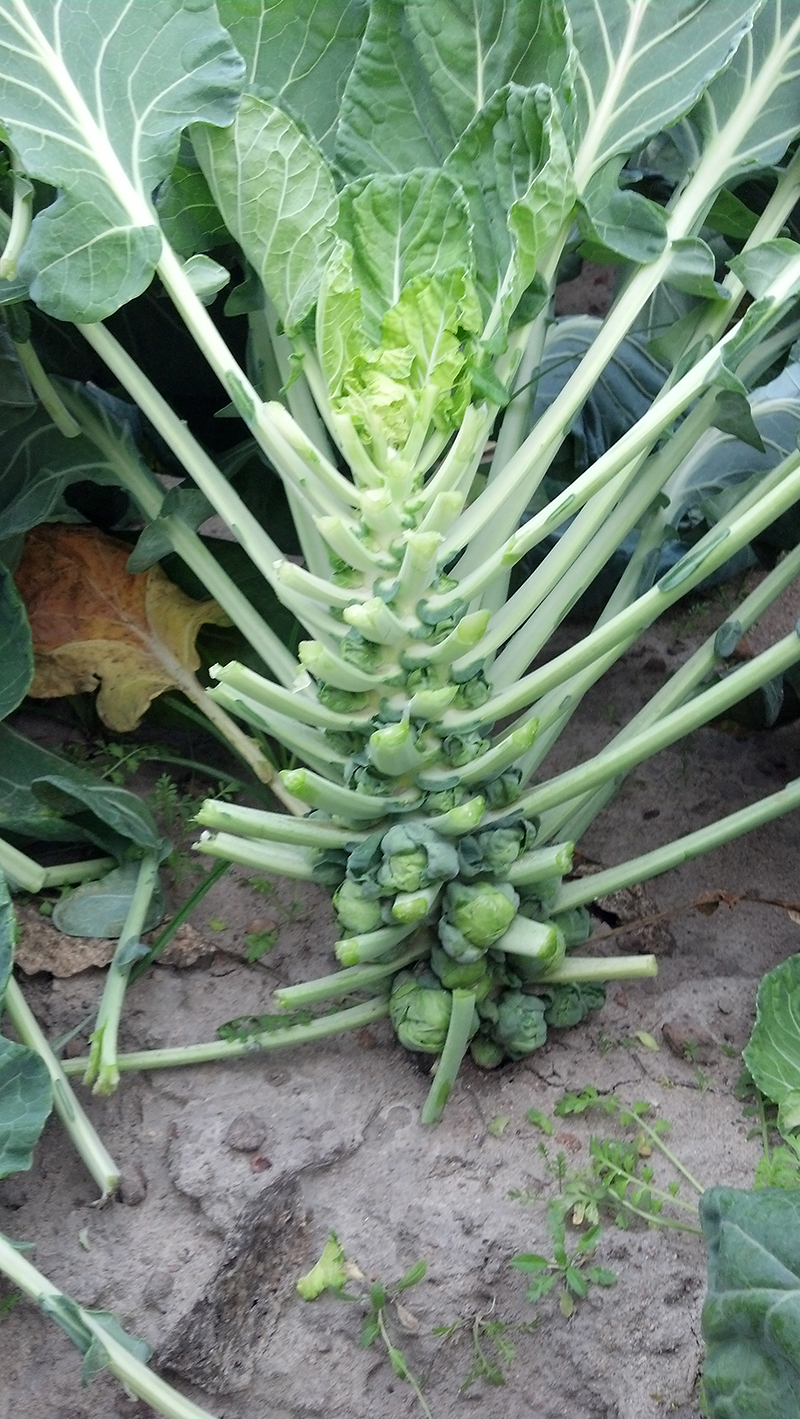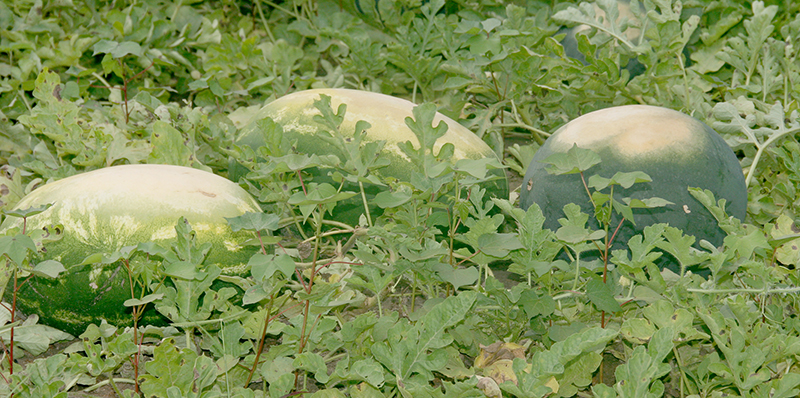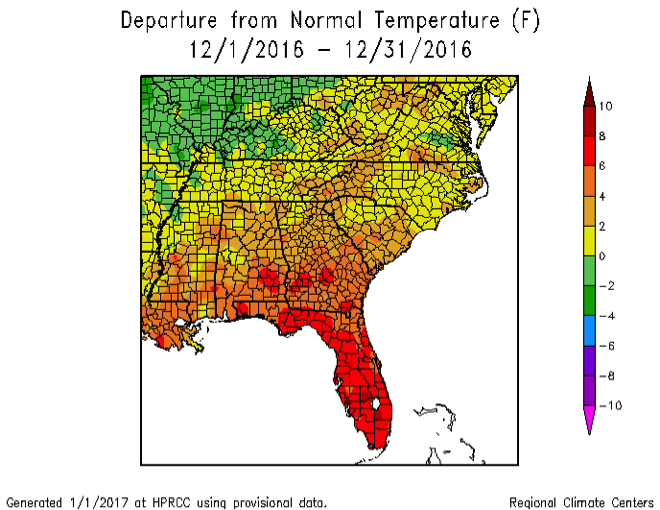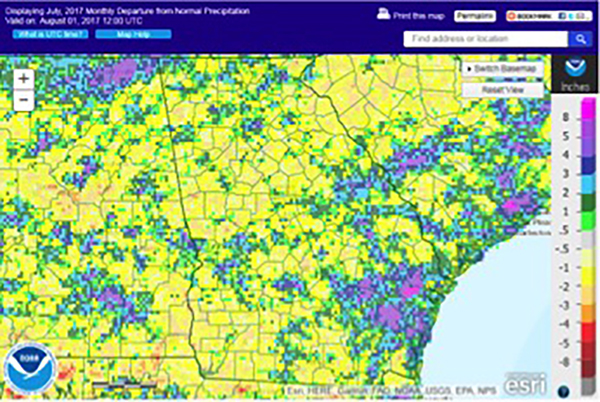 CAES News
CAES News
Return to Summer
After a month of below-normal temperatures, Georgia’s summer temperatures returned in July. Most of the state, except for the southeastern counties, was warmer and drier than normal, but climatologists don’t believe a drought is likely to develop over the next three months.

